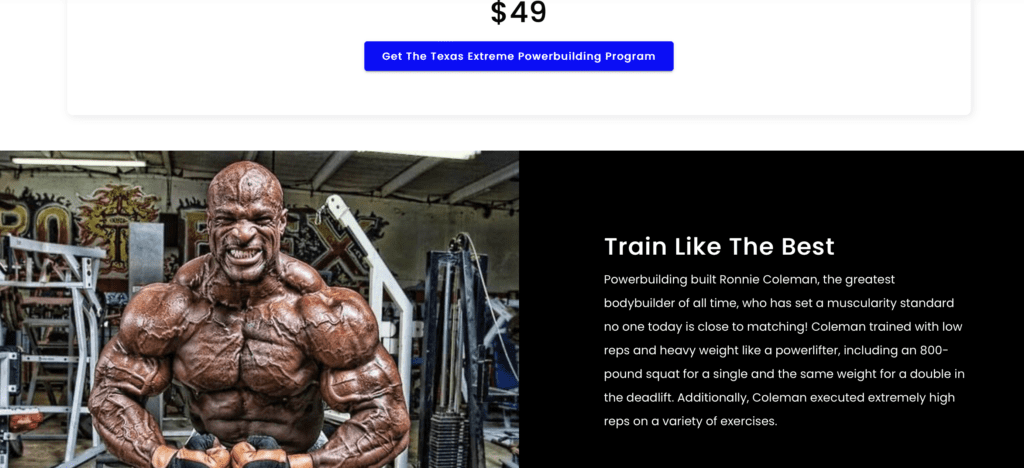Fix Weak Points: Get Stronger and Stay Balanced!
by: Josh Bryant
Nick DelToro bringing up arms with Josh at Metroflex Gym

In the heart of a sleepy West “By God” Virginia town, nestled between a Waffle House, pawn shop and a Peeler Bar, stood a notorious establishment known as the “Kick-N-Stab.” Its reputation preceded it, whispered tales of meth labs, moonshine, and hillbilly murder painting a picture of a rough-and-tumble joint. Yet, amidst the chaos, there was one constant: the bartender/bouncer, a man named Gus, whose symmetrical physique and effortless charm had the local girls swooning.
Gus, the Kick-in-Stab’s enigmatic bartender/bouncer, was a man of stark contrasts. His blacksmith’s past had sculpted a physique that was both powerful and graceful, his right arm, once dominant, now subtly mirroring the strength of his left. This symmetry was not merely aesthetic; it was a testament to Gus’s unwavering determination, a result of his meticulous “unilateral volume equated but intensity staggered” strategy.
With his newfound symmetry, Gus was ready for any stage, whether it was the Chippendales, the bodybuilding world, or simply the center of attention at the Kick-in-Stab. He often shared his strategies with the bar’s patrons, inspiring them to embrace their own physical potential. Gus’s story was a testament to the power of hard work and dedication, proving that anything is possible with a little determination and the right strategy.
Maybe one arm is smaller than the other, or a muscle group is lagging……
Let’s look at some strategies that combat these issues and will help you on any stage.
Unilateral
Unilateral resistance training (one limb at a time) forces your body to recruit more muscle fibers than bilateral resistance training. It requires much more effort for one limb, working by itself, to move a weight from one point to another, than for two limbs working in tandem to move the weight the same distance.
The sum of the force that two independent limbs are capable of producing being together is less than adding the maximum force together one limb can produce. This is called the bilateral deficit. Exceptions are highly trained powerlifters and Olympic lifters whose sport is to lift maximal weights bilaterally. Unilateral training exploits the bilateral deficit.
How many people have one limb that is weaker than its respective counterpart?
Most!
Performing an exercise unilaterally many times is a great way not only to identify a specific weakness or imbalance but to eradicate it,
If you are doing an exercise using only your left arm, your right arm cannot overcompensate and assist in balancing the weight and/or helping the lift. If your left arm is lagging behind your right arm in development, this must sound intriguing to say the least.
Equated Volume/Contrasted Intensity
One great strategy to bring up that left arm is to perform exercises unilaterally.
Let’s hypothetically focus on the triceps:
Overhead dumbbell triceps extension is the exercise of choice.
Pick a weight at which you can do 10–15 repetitions with the left arm, do this weight to momentary muscular failure, and match the same number of reps on the right arm (strong arm).
The volume is the same on both arms, the intensity—the most important ingredient to growth—is maximally stressed on the weaker arm. This brings balance, but not at the expense of weakening and atrophying the arm, like many traditional strategies do.
If you completely ignore the good side, generally the result is two bad sides. The same strategy can be used for other body parts: For the quadriceps use one leg extensions, for hamstrings use one leg curls, and so on.
Increased Frequency
For a lagging muscle group, increased frequency training makes chicken salad out of chicken scat.
Just 2–3 extra sessions a week focused on the lagging body part; with submaximal intensity; your muscles will recover. My concern is your joints, so be careful.
Let’s say your lats are behind in development. If this is your current split—
Monday: Chest
Tuesday: Arms
Thursday: Back
Friday: Shoulders
Saturday: Legs
—then Monday/Saturday, in a separate session or mixed in your workout (if you cannot train twice a day), do lat pull-downs with cables on your knees (3 sets of 12 reps @ 70% intensity), straight arm pull-downs (3 sets of 12 reps @ 70% intensity), and wide grip pull-ups (3 sets of 8 reps @ 70% intensity). These extra sessions would be with submaximal intensity, no accommodated resistance or any type of eccentric overloading.
Over the course of 12 weeks, instead of working your back 12 times, you have done it 36. In the process, you have not fatigued your CNS or sacrificed other workouts because of the low intensity. The idea, as Lee Haney once said, is “stimulate, don’t annihilate.”
Many professors will say that it takes about 48 hours for a muscle to recover from an intense workout. This is a very simplistic notion; doing a Branch Warren Leg Day will take much longer.
Sneaking in a few extra sets of submaximal lat pull-downs will take less. Think about it; does it take 48 hours to recover if you walk to get your mail? Of course not. Recovery is relative. Consider giving submaximal high frequency training a shot to bring up a lagging body part.
Build a Symmetrical Physique with Josh’s Texas Extreme Powerbuilding Program HERE.

